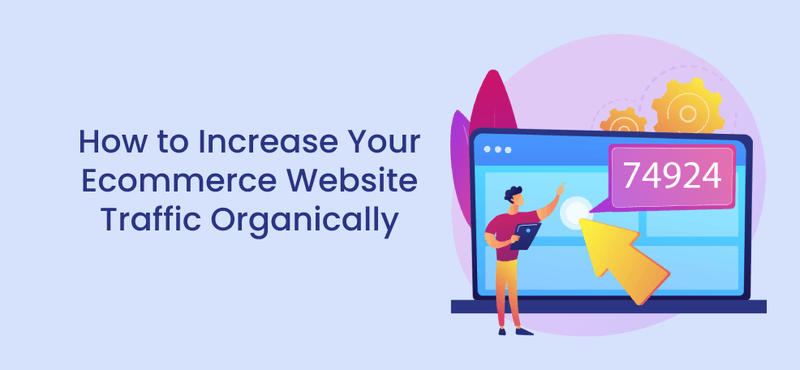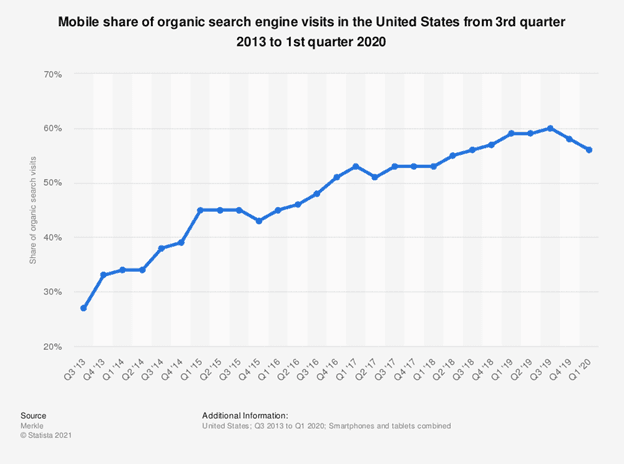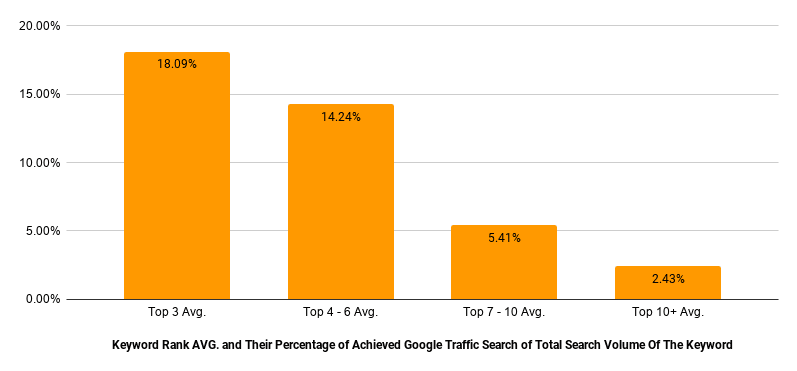Do you want organic traffic on your eCommerce website? If so, then this read could be your go-to guide.
Organic traffic is much more efficient than other practices, including traffic through paid advertising, for your eCommerce website. That's because the latter takes time and money to get desirable results.
When it comes to eCommerce platforms, the competition is tough. Thus, to stay ahead of the competitors, having strong organic traffic is the primary key.
Through organic search, the eCommerce websites could rank higher with good quality content and well-optimized websites. Besides, it’s a cost-effective business approach where a customer is already interested. So, that's a win-win situation!
If you are new to terms like organic search and traffic for your eCommerce website, then plunge into this guide. Here we have mentioned everything from scratch about eCommerce traffic and its role to increase qualified leads.
What Is Organic Traffic In Ecommerce?
Organic traffic in eCommerce signifies those visitors who visit your website due to organic search results. These results are unpaid. Simply put, the visitors are conventionally achieved through search engine platforms like Google or Bing.
They do not occur by any reference from other platforms. When organic traffic is compared to paid ones, it's pretty justified that latter ones are fostered through paid ads.
Most eCommerce website owners need organic traffic because they are achieved without any cost. It is consummated when a visitor visits the eCommerce website after searching it on search-engine platforms.
As you proceed, you will read terms like SEO as well. SEO or Search Engine Optimization is a way of online marketing that is performed to increase organic traffic.

What are the Benefits of Organic Traffic?
In the eCommerce business, organic traffic has its own perks. Be it better sales or staying ahead amidst competitors, the list could be long. Let's take a look into the advantages for a better idea.
#1 Better Sales
Did you know maximum people use search engine platforms like Google, Yahoo, and Bing for eCommerce search? Whenever a person decides to buy something, they instantly search for them on these platforms. Based on the results, they make their buying decisions.
Out of all the search engines, Google is preferred by users a lot. So, it's pretty likely that visitors will use it to find products. With extensive people using Google presently, you can undoubtedly utilize this organic traffic for your eCommerce business success. All you need is good SEO practices for the same.

#2 Getting New Customers
Organic traffic can help you get new customers, including those who you are least expecting. In short, you will get a large number of brand new customers that were not present earlier.
All you are required to do here is focus on website content and SEO strategies; that's it! If you do so, you will get better traffic even from those keywords that are pretty hard to obtain (long-tailed keywords).
Keywords that are uncommon, longer, and more specific are called long-tail keywords. They are more profitable than the common ones.
When a customer searches through long-tailed keywords, they are close to making buying decisions. With efficient tactics like content and SEO, you could get traffic from long-tailed keywords too.
#3 Provides Long-Term Outcomes
Organic traffic renders long-term outcomes, which is what matters. Paid AdWords is where you pay for the click and await customer procurement.
However, you won't get any long-term benefits. Either the customer will buy the illustrated product, or they will avoid it.
Likewise, with the implementation of digital marketing tactics like SEO and content, you will get long-term outcomes. That's because they are likely to stay!
#4 Keeps You Ahead Of The Competitors
By targeting organic traffic, you will be staying ahead of your competitors. However, if you are not doing so, it clearly implies that your competitors are doing better than you. In fact, they may be taking all the customers that could have been yours.
Of course, you are in a field where the objective is to stay ahead. And a suitable way to do so is by focusing on efficient SEO strategies and increasing the search rankings. Both these factors will eventually lead to good organic traffic and hence, a foremost position in the industry.
#5 Enhances User Experience
For organic leads, developers use top-notch SEO strategies, which in turn enhances the website. An improved website then intensifies the user experience for better eCommerce sales.
Keep note that when the website is not appropriately outlined, it somewhat influences the sales, rankings, and traffic too. The customers may acknowledge these factors and abandon the website for shopping.
How Do I Know If I Have Organic Traffic to My Online Store?
The answer is simple. Check it by reaching the Google Analytics Dashboard.
All you are required to do is just go to Google Analytics Dashboard and then select the Acquisition category. Following this, click on "All Traffic" and then "Channels."
Here, you will have detailed information on all the data. The data will tell you about the website's organic performance. Besides, here are three signs that signify an increase in organic traffic on your online store.
#1 Growth in audience
If you have not implemented paid search and the website traffic is generated through search-optimized strategies, it's likely that the traffic is organic. The results that you get through content optimization and SEO strategies are purely organic. These tactics impact the visits and make them more visible among the customers.
#2 Increase in Qualified Visitors
If you start noticing qualified visitors, it implies that you are getting organic searches. Visitors achieved through organic search are much more qualified than the ones obtained from paid ads.
#3 Increased Stay Time
Besides, organic traffic stays on the website more. If you are noticing an exceeding stay of customers (5 minutes longer than usual) and more browsing, that's organic traffic. When people browse more, they are more likely to buy the products.
eCommerce SEO checklist
In order to be the best among all, it's essential to optimize your eCommerce website according to the search engines. If your online store is secured with efficient eCommerce SEO, no one can stop you from ranking high. Here's an eCommerce SEO checklist to help you out with the same.
Technical Checklist
First, we will talk about the technical SEO checklist. This includes the following.
#1 Check the Website Crawlability and Indexability
Start by checking the website crawlability and indexability, as both of them are important for product/content ranking. Crawlability means how search engine platforms can crawl your website content while avoiding broken links.
Meanwhile, indexability means how a search engine can examine and include a page in the index. Aside from these two factors, the website content, schema markup, speed, etc., are relevant aspects of the technical SEO checklist too.
#2 Identify and Fix Pages with 4XX Errors
Moving on, make sure to identify the pages that show errors. For that, you can use the Google Search Console. After website verification, fixing pages should be your priority.
These pages are the ones that do not crawl on the website. The main reasons behind these crawling issues include temporary server errors or products that are out-of-stock. Try to identify them and fix the errors eventually!
#3 Check the Eliminated Pages
The main thing about eliminated pages is that Google is unable to index them due to the robots.txt file code. Usually, eliminated pages are those pages that you do want to get crawled on the search engines.
For example, the carts page. There is no significance in getting them crawled on the search engines, so it's excluded. But, it is best to check the eliminated page list and see if any vital page has been added to it. We would suggest you be sure about the excluded pages and then proceed with other tactics.
#4 Include Schema Markup to Your eCommerce Website
Schema markups are pretty crucial for your eCommerce website. That's because they are HTML tags through which customers could see the product details, including price, availability, and ratings. It's instantly displayed on the search engine page.
Schema Markups ensure the reliability and importance of your products. Also, it ranks the products on shopping tabs and top pages of Google. To know about your Schema Markup, plunge into the product reports of Google Search Console.

eCommerce Content Checklist
Another relevant part of the eCommerce SEO checklist is related to its content. Even if content in eCommerce concerns products primarily, they still make a difference. Try to implement the following tactics.
#5 Stay Away from Duplicated Contents
Be it blogs or product descriptions; duplicated contents are acceptable nowhere. Google algorithms do not support contents that are copied from other websites. If your website content matches about 60% with any other website, it's considered a duplicate.
In an eCommerce business, it's best not to create individual pages for items with multiple color and size options. For example, if you make seven separate pages for products with seven color options, the pages will be considered duplicated.
So, what's the solution to this issue? Combine the size and color options on one page. While doing so, keep the user-friendliness of the website in mind.
#6 Mobile-First Indexing
Mobile-first indexing means that search engines like Google utilize the mobile version of website content for both ranking and indexing. It does not use the desktop version of the website content.
This came after extensive use of mobile phones. It increased to such an extent that mobile searches surpass desktop searches. So, make sure to optimize the products and websites for smartphones.

Be it product images or content; everything should be accessible through the mobile version of the website. By such means, it will be easier for smartphone users to shop from your website.
Try to create a responsive eCommerce website where the website gets altered as per the device of the visitor. So, be it smartphones or desktops, the content will be accessible everywhere.
Keyword Checklist
After the technical aspects and content, try to focus on the keyword checklist. For that, assess the keywords that you use presently and check the page ranking. You can implement the following tips for the same.
#7 Focus on the Right Keywords
When choosing keywords, focus on sales-driven and target specific ones. Most of the website owners focus on keywords with maximum search volume concerning the brand.
However, the best conversions are achieved from the specific keyword with less search volume. Specific terms instantly redirect the visitor to the product page. Not only does it benefit them with instant results, but it also helps the websites to gain more conversions.

#8 Concentrate on Keyword Intent
Keyword intent means the main objective of the user for searching the product. In simple terms, it means what the user is likely to do when searching for any product. Speaking of keyword intent, you should make sure that the targeted keywords used by you emulate the appropriate search intent.
Keywords could be of various types, including transactional and informational. Through transactional keywords, users are redirected to websites with more interaction. Likewise, informational keywords divert a user to a website with information.
For eCommerce websites, you should be focused on transactional keywords. So, try to identify keyword types and implement them so that visitors reach the correct product page.
Conclusion
Organic traffic for eCommerce websites is the clicks you get from search engine result pages like Google. This does not include the click-through paid ads.
Organic traffic is essential for eCommerce websites because it enhances user experience and generates sales. If you are a rookie in the eCommerce field or if you want to develop your website, the above guide is sufficient. To sum up the guide, we have discussed
- Perks of organic traffic in eCommerce
- Ways to know about your organic traffic
- Signs that show increased organic traffic
- eCommerce SEO checklist that includes the content, keyword, and technical aspects
Make sure to give this guide a read and implement the tactics. You will notice an increase in qualified leads soon!


![Ecommerce Organic Traffic Guide 2021 and Beyond [How to Increase Qualified Leads]](https://dayella.b-cdn.net/wp-content/uploads/2021/11/predict-organic-traffic-1520x800_b5c98f9340ddaeb273eae2efb34c712f_2000-1080x675.png)